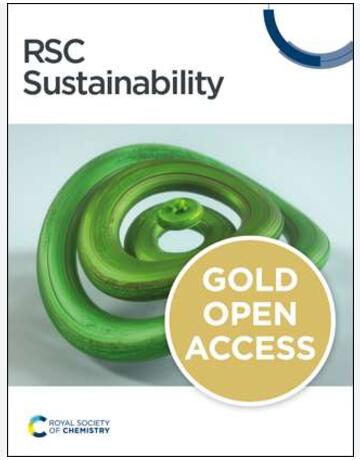Tracking Evapotranspiration Patterns on the Yinchuan Plain with Multispectral Remote Sensing
IF 3.3
3区 环境科学与生态学
Q2 ENVIRONMENTAL SCIENCES
引用次数: 0
Abstract
Evapotranspiration (ET) is a critical component of the hydrological cycle, and it has a decisive impact on the ecosystem balance in arid and semi-arid regions. The Yinchuan Plain, located in the Gobi of Northwest China, has a strong surface ET, which has a significant impact on the regional water resource cycle. However, there is a current lack of high-resolution evapotranspiration datasets and a substantial amount of time is required for long-time series remote sensing evapotranspiration estimation. In order to assess the ET pattern in this region, we obtained the actual ET (ETa) of the Yinchuan Plain between 1987 and 2020 using the Google Earth Engine (GEE) platform. Specifically, we used Landsat TM+/OLI remote sensing imagery and the GEE Surface Energy Balance Model (geeSEBAL) to analyze the spatial distribution pattern of ET over different seasons. We then reproduced the interannual variation in ET from 1987 to 2020, and statistically analyzed the distribution patterns and contributions of ET with regard to different land use types. The results show that (1) the daily ETa of the Yinchuan Plain is the highest in the central lake wetland area in spring, with a maximum value of 4.32 mm day−1; in summer, it is concentrated around the croplands and water bodies, with a maximum value of 6.90 mm day−1; in autumn and winter, it is mainly concentrated around the water bodies and impervious areas, with maximum values of 3.93 and 1.56 mm day−1, respectively. (2) From 1987 to 2020, the ET of the Yinchuan Plain showed an obvious upward and downward trend in some areas with significant land use changes, but the overall ET of the region remained relatively stable without dramatic fluctuations. (3) The ETa values for different land use types in the Yinchuan Plain region are ranked as follows: water body > cultivated land > impervious > grassland > bare land. Our results showed that geeSEBAL is highly applicable in the Yinchuan Plain area. It allows for the accurate and detailed inversion of ET and has great potential for evaluating long-term ET in data-scarce areas due to its low meteorological sensitivity, which facilitates the study of the regional hydrological cycle and water governance.利用多光谱遥感技术追踪银川平原的蒸散模式
蒸散发(ET)是水文循环的重要组成部分,对干旱和半干旱地区的生态系统平衡具有决定性影响。银川平原地处中国西北戈壁,地表蒸散发强烈,对区域水资源循环有重要影响。然而,目前缺乏高分辨率的蒸散量数据集,且长时间序列遥感蒸散量估算需要大量时间。为了评估该地区的蒸散发模式,我们利用谷歌地球引擎(GEE)平台获取了银川平原 1987-2020 年间的实际蒸散发(ETa)。具体而言,我们利用 Landsat TM+/OLI 遥感图像和 GEE 地表能量平衡模型(geeSEBAL)分析了不同季节的蒸散发空间分布模式。然后,我们再现了 1987 年至 2020 年的蒸散发年际变化,并统计分析了不同土地利用类型的蒸散发分布模式和贡献。结果表明:(1)银川平原的日蒸散发a在春季以中部湖泊湿地区最高,最大值为4.32 mm day-1;夏季主要集中在耕地和水体周围,最大值为6.90 mm day-1;秋冬季主要集中在水体和不透水区周围,最大值分别为3.93和1.56 mm day-1。(2)1987-2020 年,银川平原的蒸散发在部分土地利用变化较大的地区呈明显的上升和下降趋势,但区域整体蒸散发保持相对稳定,未出现剧烈波动。(3)银川平原地区不同土地利用类型的 ETa 值排序为:水体 > 耕地 > 不透水 > 草地 > 裸地。结果表明,geeSEBAL 在银川平原地区具有很强的适用性。它可以对蒸散发进行精确而详细的反演,由于对气象敏感性较低,在数据稀缺地区评估长期蒸散发具有很大的潜力,有利于区域水文循环和水治理的研究。
本文章由计算机程序翻译,如有差异,请以英文原文为准。
求助全文
约1分钟内获得全文
求助全文
来源期刊

Sustainability
ENVIRONMENTAL SCIENCES-ENVIRONMENTAL SCIENCES
CiteScore
6.80
自引率
20.50%
发文量
14120
审稿时长
17.72 days
期刊介绍:
Sustainability (ISSN 2071-1050) is an international and cross-disciplinary scholarly, open access journal of environmental, cultural, economic and social sustainability of human beings, which provides an advanced forum for studies related to sustainability and sustainable development. It publishes reviews, regular research papers, communications and short notes, and there is no restriction on the length of the papers. Our aim is to encourage scientists to publish their experimental and theoretical research relating to natural sciences, social sciences and humanities in as much detail as possible in order to promote scientific predictions and impact assessments of global change and development. Full experimental and methodical details must be provided so that the results can be reproduced.
 求助内容:
求助内容: 应助结果提醒方式:
应助结果提醒方式:


